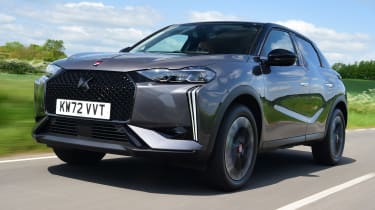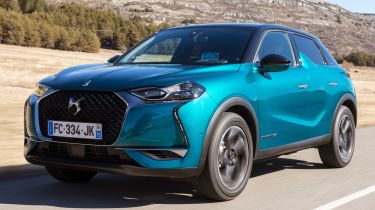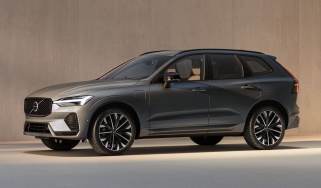DS 3 review – stylish small SUV, but lacks practicality


Can you parallel park? Some motorists find this tricky manoeuvre so stressful there’s actually a word to describe the fear of attempting it: “parallelophobia”. It’s a daunting part of any driving test and often avoided by even the most experienced drivers. Thanks to advances in autonomous driving, many new cars can perform this task for you. We’ve compiled a list of the best cars you can buy with self-parking technology.
Browse any online video site and there’ll be thousands of clips featuring drivers toiling with the procedure, scuffing their car or simply giving up altogether. In 1991, the reverse parking manoeuvre became a compulsory part of the driving test, but tens of thousands of drivers on UK roads may never have had any training on the proper techniques for parking accurately and swiftly.
Parking sensors and reversing cameras are useful but with thousands of drivers prepared to avoid difficult spaces altogether, wouldn’t it be better if the car could simply park itself? Well, most manufacturers have taken the anxiety out of finding a suitable spot completely, thanks to clever new technology that can do just that. Today you can buy cars from brands such as Mercedes and Volkswagen with Active Park Assist technology. Even popular small cars like the Ford Fiesta now have the ability to park themselves.
 Practical driving test tips: how to get your driving licence
Practical driving test tips: how to get your driving licence
The latest evolution of self-parking technology doesn’t even need you to touch the pedals, selecting forward and reverse gears itself in cars with automatic gearboxes and applying the parking brake when finished. A handful of luxury cars even offer a simple ‘remote control’ feature, where you can park the car while standing next to it, using the key or your smartphone to instruct it. That’s sure to turn some heads outside your local supermarket.
Read on for our list of the 10 best cars with self-parking functionality...
If you’d rather hone your parking skills instead of relying on self-parking, you might want to take a look at our top 10 smallest cars or our rundown of the best city cars that are ideal for tackling tight parking spaces.
The DS 3 Crossback ticks all the right boxes in terms of styling, comfort and in-car tech. It’s not the most spacious of SUVs but it’s not the worst either, and it also comes with Park Pilot system.
The parking system not only takes over the steering of the car but the accelerator and brake pedals too, providing an almost fully automated experience. It’s also easy to use, thanks to graphics displayed on the central screen with instructions for the driver.
The Skoda Octavia, in hatchback or estate guise, is one of the most impressive family cars on the market. It’s spacious, practical, high quality and good value. The latest model is also available with the brand’s Park Assist functionality, which enables the car to steer itself into a suitable parking spot detected by clever sensors that notify the driver.
All the driver needs to do is select the appropriate gear and keep control of the pedals. While you’d hope it wouldn't take more than a couple of manoeuvres to park the car, the Octavia will make as many as necessary to get into the desired spot.
Mercedes used to offer our favourite self-parking system, Parktronic, as an optional extra on pre-2018 models of the C-Class. It would automatically scan for suitable spaces (including perpendicular bays) without any prompts, only requiring you to stop and select reverse. Once you choose to let the C-Class park for you, it takes control of the steering, acceleration, braking and will even select forward and reverse gears autonomously. Now, however, the C-Class comes equipped with an active park assist package as standard. It’s very similar in its functionality, only the driver has to keep control of the pedals while the car controls the steering wheel.
The Renault Captur is one of the best crossovers on the market. It’s stylish, cheap to run and has a decent-sized boot of just over 400 litres. Despite its standard equipment and practicality, it comes with an attractive and affordable price tag, starting from just under £15,000.
The Captur is available with Renault’s Easy Park Assist system. Using parking sensors dotted around the car, the Captur can offer a semi-autonomous parking experience, measuring available spaces and maneuvering into them accordingly. All the driver needs to do is select the right gear and manage the pedals.
The BMW 5 Series is an executive saloon car, so parking without any technological aids could certainly be a nerve-wracking experience. To let the car park for you, press the Parking Assistant button next to the gear lever and drive past the space with the indicator set to the side of the car you want to park on. Once a space is found, it’ll pop up on the infotainment screen, allowing you to select it using the iDrive controller. Next, press and hold the Parking Assistant button with your feet off the pedals and hands off the steering wheel and the 5 Series will park itself, putting its automatic gearbox in park at the end of the manoeuvre. Release the button at any time during the procedure and the car will stop.
When this system was first introduced for the BMW 7 Series, it hit the headlines thanks to its remote parking feature, allowing you to stand outside the car and ‘drive’ it forwards and backwards using an advanced key fob with its own touchscreen. It’s available on the current generation 5 Series, launched in 2017, and is ideal for narrow garages or spaces where getting in and out of the car would be difficult. However, this function is only possible if the car has 10 metres or less to travel and our testers found it slow and “like walking a dog at Crufts”, making it a bit of a gimmick. It also adds nearly £2,500 to the car’s price.
The Peugeot 3008 is one of our favourite SUVs on sale. It’s spacious, practical and comfortable. We also like its automatic parking system, which comes fitted with the optional Visio Park 2 accessory pack, costing £450 for Allure, GT Line and GT trim levels. In our testing we described it as “quick and decisive”, confidently parking the car in bays.
It carried out parallel parking maneuvers with similar ease and speed, too, and can also steer the car out of a tight spot. All the driver needs to do is control the accelerator and brake pedals, monitoring the manoeuvres displayed clearly on the dashboard screen, and the 3008 will take care of everything else.
The Ford Fiesta remains one of the most popular superminis on the market and for good reason. It’s fun to drive, is more practical and spacious than ever and is equipped with a host of safety and driver assistance features.
One of those features is the active parking system, called the Advanced Auto Park Assistance Pack. It’s available on Titanium models for £400 or on Vignale trim levels for £200. The system has the ability to park you into either a parallel or bay space and steer you out of it too. All you need to do is control the pedals while the car takes charge of the steering wheel and provides you with audible warning and instructions.
The Volkswagen Golf does just about everything very well and this extends to its self-parking skills. On every model other than the entry-level S trim, the Golf can be ordered with the brand’s optional Park Assist system, meaning it can differentiate between and manoeuvre into different styles of parking space. The pedals are managed by the driver while the Golf takes care of the steering.
We found it particularly adept at bay parking, just like you’ll need at the majority of shops and supermarkets. In our automatic-equipped Golf, however, we found the system could disengage if we switched from drive to reverse too quickly, or didn’t stop for long enough between moving forwards and backwards. Even without a reversing camera, the parking sensors and dashboard display provide plenty of guidance. It does cost £600, which is expensive when compared to the £200 system for the Ford Fiesta.
The Volvo XC60’s Scandinavian interior exudes relaxing vibes and letting your SUV park itself should surely lower your pulse even further. Volvo’s Park Assist Pilot comes as part of the Xenium option pack, costing almost £2,000. That’s certainly not cheap, especially when you consider that the Mercedes C-Class offers Mercedes’ version of the technology as standard. But the pack includes an opening panoramic sunroof and 360-degree camera view, making it look better value.
The system has the ability to guide the XC60 into a space 20% larger than the car, thanks to ultrasonic sensors that measure the space. As with most of these systems, the driver controls the accelerator and brake pedals as the XC60’s steers into the chosen space.
Tesla has become famous thanks to its desirable electric cars that are not only incredibly fast but can almost drive themselves thanks to their Autopilot semi-autonomous driving mode. One such function is the Summon parking system, available on the Model 3, X and S.
It all sounds very James Bond; you hop out of the car, press a button on the key fob and the Tesla will seek out a free parking space on its own. In reality, the car can drive itself for up to 12 metres into or out of a garage or a desired space but it can’t steer itself. Instead, the driver has to line up the car and then control the car using either the in-car buttons or a smartphone app from outside the car. They also have to keep pressing the buttons, otherwise the car will stop the manoeuvre.
Check out our guide to BMW Park Assistant and Park Assistant Plus.


New Smart #5 Brabus is a 637bhp far cry from the brand’s city car past

Best car leasing deals 2025: this week’s top PCH offers


